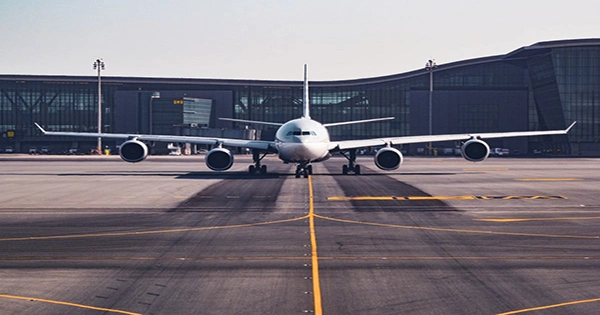Please make sure your seats are upright, tray tables are tucked away, window shades are up, laptops are stored in the overhead bins, and electronic gadgets are configured to flight mode, according to the procedure that we all know by heart.
The first four seem acceptable, don’t they? We must have the window coverings raised in order to see if there is an emergency, such as a fire. So that we can exit the row quickly, tray tables need to be tucked away, and chairs need to be upright. In an emergency, laptops may become projectiles because the seat back pockets are not sturdy enough to hold them.
Additionally, mobile devices must be in flight mode in order to prevent an emergency on board the aircraft. It all depends on who you ask.
Technology has come a long way: Radio services are essential for aviation navigation and communication, and they have been integrated since the 1920s to reduce interference.
Even 60 years ago, some of the older analog technologies we employed were far less sophisticated than the digital technology that is currently in use. According to research, personal electronics are capable of emitting a signal in the same frequency range as the aircraft’s navigation and communications systems, which results in electromagnetic interference.
However, a 1992 independent investigation by the US Federal Aviation Authority and Boeing into the usage of electronic devices on airplanes showed no interference problems with computers or other personal electronic devices during non-critical stages of flight. (The essential moments are regarded as takeoff and landing.)
Billion people: Why then does the aviation sector still prohibit using mobile phones despite these international standards being in place? Ground interference is one of the issues, which you would not expect.
Wireless networks are linked by a system of towers; if everyone utilizes their phones while flying over these ground networks, the networks might become overloaded. Over 2.2 billion people travelled in 2021, which is less than half the amount of people who traveled in 2019. The wireless providers might be right in this case.
Of course, the adoption of a new standard has been the most significant recent shift in mobile networks. Many in the aviation business are worried about the current 5G wireless networks, which are coveted for their faster data transfer.
Despite the fact that radio frequency bandwidth is constrained, we continue to attempt to integrate new devices. The 5G wireless network bandwidth spectrum is extremely close to the designated aviation bandwidth spectrum, according to the aviation sector, which could interfere with navigation equipment adjacent to airports that help with aircraft landing.
In the end, we must not forget air anger: Nowadays, the majority of airlines provide their passengers either free or pay-per-use Wi-Fi services. Passengers might conceivably use their mobile phones to make video chats with friends or clients while in flight thanks to improved Wi-Fi technologies.
I recently asked a flight attendant about her thoughts about using a phone while flying during our conversation. She said that waiting for customers to conclude their call before asking if they wanted any drinks or food would be inconvenient for the cabin personnel. If everyone was making calls, the in-flight service would take longer to complete on an airplane with more than 200 passengers.
For me, the issue with using phones while in flight is more about the crowded social environment created by having more than 200 individuals on board who may all be speaking at once. In an era where disruptive passenger behavior, such as “air rage,” is becoming more common, using a phone while flying could be another catalyst that alters the entire flight experience.
Disruptive behavior can take many different forms, from failing to follow safety regulations like not wearing seat belts, to verbal and physical fights with other passengers and flight attendants, known as “air rage.”
In conclusion, using a phone while flying currently has no negative effects on the aircraft’s ability to fly. There are a lot of passengers to serve, therefore cabin personnel might wish to avoid delays when offering in-flight services to them.
We’ll need more research to address the 5G question regarding interference with aircraft navigation during landings because 5G technology is encroaching on the radio bandwidth of aircraft navigation systems. Remember that takeoffs are optional but landings are required when we talk about the two most important parts of flight.















